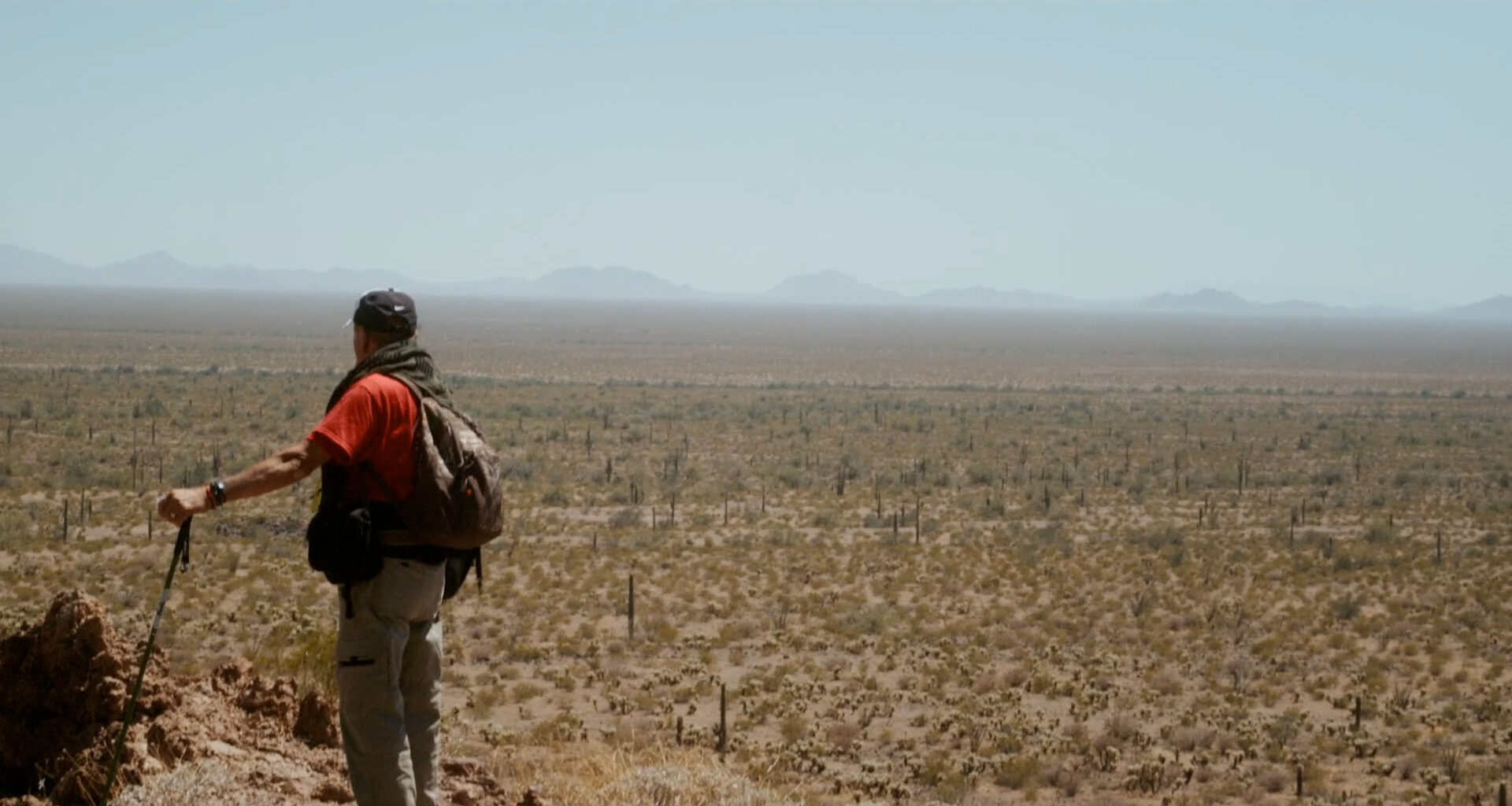Review:
The documentary “Desert Angel,” about Lemon Grove resident Rafael Larraenza, had its local premiere at the San Diego International Film Festival over the weekend.
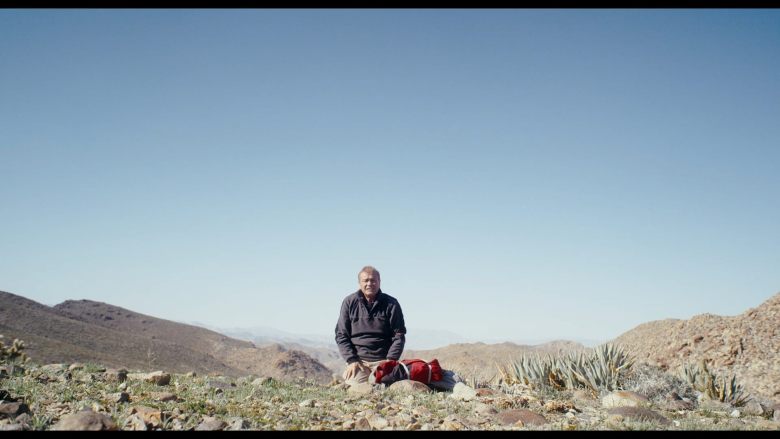 Rafael Larraenza crests a hill, resting in the desert while searching for lost migrants. (Photo courtesy “Desert Angel”)
Rafael Larraenza crests a hill, resting in the desert while searching for lost migrants. (Photo courtesy “Desert Angel”)
LA JOLLA — Rafael Larraenza took slow steps down the stairs at a theater inside UTC to be interviewed following a documentary screening covering his volunteer efforts to save migrants trapped or lost in the desert wilderness along the border.
When audience members asked about his health, the aging trailblazer in migrant search and rescue operations said his slight limp was from sciatica.
It was a valid question after so much of the documentary “Desert Angel” focused on the physical, financial and emotional toll of his 25 years leading rescue missions. Over the five years the documentary was filmed, Larraenza’s mobility visibly declines before receiving a double hip replacement. From his Lemon Grove trailer, he gets out of bed with stiff, stilted movements, only to rush to his truck if he receives a distress call.
The documentary “Desert Angel” from filmmaker Vincent DeLuca had its local premiere at the San Diego International Film Festival over the weekend. It debuted in 2024 and has been on the film fest circuit since, garnering a special mention at the Palm Springs International Film Festival and snagging a Jury Award at the Austin Film Festival 2024.
“Rafael is a local hero doing work deeply important for San Diego and it is wonderful to be able to share his life, work and world view with those who live there,” DeLuca said.
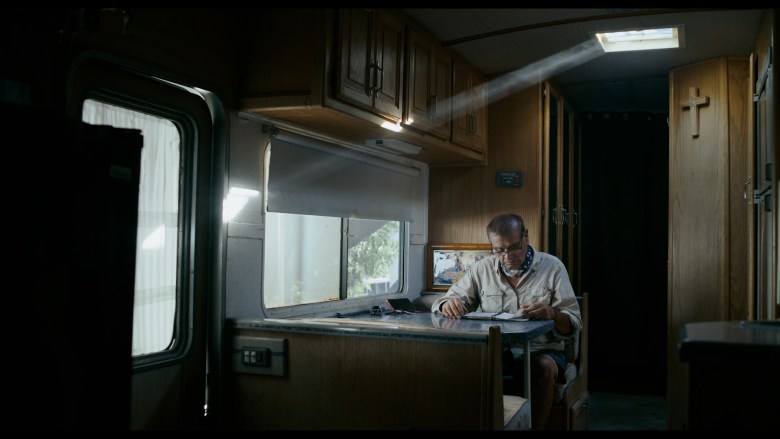 Inside Rafael Larraenza’s basecamp in Lemon Grove. (Photo courtesy “Desert Angel”)
Inside Rafael Larraenza’s basecamp in Lemon Grove. (Photo courtesy “Desert Angel”)
The documentary name pulls from Larraenza’s organization, Angeles del Desierto or Desert Angels. But with the focus solely on him, it is about his singular journey as a desert angel, hiking 80,000 miles over the last quarter century to find those abandoned by smugglers, lost, injured or dead in freezing mountains near San Diego, the vast deserts of Texas and the hostile rock faces of New Mexico.
Human faces of immigration
To the thousands he has rescued, and even the families he reunited with the remains of loved ones, Larraenza is the desert angel. But despite its empyrean name, the film shows Larraenza as deeply human, albeit an inspiring example of one.
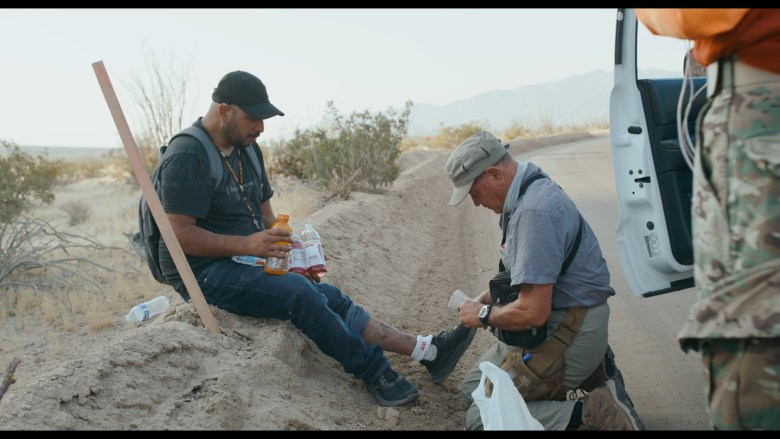 Rafael Larraenza, a former paramedic, wraps the injured ankle of a migrant. (Photo courtesy “Desert Angel”)
Rafael Larraenza, a former paramedic, wraps the injured ankle of a migrant. (Photo courtesy “Desert Angel”)
Larraenza’s inner landscape is depicted through revealing interviews inside his Lemon Grove basecamp, often the most enlightening part of the film. These paint the human portrait — of a remarkable man who still goes through conflict with others, not sure what to do about his aging body, with empathy that extends even to the tarantula that visits him at night.
The human face the film gives to a highly politicized issue, immigration, is one of the reasons film fest chief executive officer Tonya Mantooth spotlighted it, she told CBS 8 in the weeks before the event. With the short track from local filmmakers, “Desert Angel” was the only feature-length film about a San Diego subject.
Before emigrating to San Diego, Larraenza worked as a paramedic and volunteered with the Red Cross. He rescued people following the Mexico City earthquake, only to struggle finding a job in its aftermath.
He then moved to San Diego, where he grew his family. Then one night in 1998, he heard a story in the news about a group of young migrants lost in the snow. He went to the mountains with his brother to join the search party, only to discover no one else was searching. He then conducted his own search, successfully rescuing the stranded people.
The lack of help many such migrants face galvanized him to create Desert Angels, where lost migrants or their family members can call him with coordinates.
Even a decade into his efforts, Larraenza led a comfortable life as a mechanic in San Diego, conducting rescue missions on weekends and holidays. But when his work meant a woman died in the snowy mountains, waiting for help for days, he could no longer stomach sacrificing others for a paycheck. He quit his job – but that meant he had few funds for his trips, often running out of gas while driving along the border to find people.
As he ages, Larraenza wrestles again with what to do. If he passes the mantle to someone else, he knows they would risk bodily harm and death doing what he does. Even through the pain in his hips, he keeps conducting search operations, wracked by guilt if a missing person is found dead, feeling that it was his own failing in arriving too late.
Apolitical lens
The film largely ignores the political complexities of immigration to focus on the humanity underlying the issue, as framed through the story of El Savadoran mother Indira.
She travels with Larraenza through Texas to find her son, a university student who fled gang violence he believed would kill him – only to die during his long trek. Indira’s fear, hope and search for closure thread through the film. And even as others give up the search, Larraenza continues, demonstrating that Rodrigo mattered.
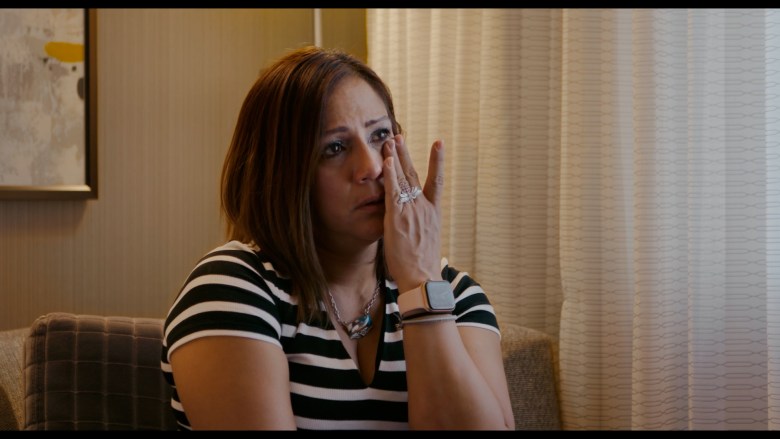 Indira, an El Salvadoran immigrant residing in California, searches with Larraenza for her missing son, Rodrigo. (Photo courtesy “Desert Angel”)
Indira, an El Salvadoran immigrant residing in California, searches with Larraenza for her missing son, Rodrigo. (Photo courtesy “Desert Angel”)
DeLuca could lean on the high-octane moments of life-or-death risks Larraenza takes to find people, but instead meditates more on the grief he wrestles with as they discover human remains in the lonely terrain.
Nothing is shared about the threats of arrest Larraenza faced as recently as 2019 when former Attorney General Jeff Sessions extended prosecution against harboring fugitives to those leaving water and food for migrants in the desert – or even the violence he risks from anti-immigrant border vigilante groups.
Only passing comments reveal extending the border wall means migrants are taking riskier paths to the US, like through New Mexican mountains where construction on such terrain is nearly impossible. So is hiking it without rock climbing gear, as the film shows.
Man vs. nature
Rather than any political enemies, the antagonist of the film is the harsh landscape itself. Cinematographer Tin Chan often pulls back so Larraenza is only a speck on the horizon as miles and miles of rocky, cactus-filled land span below.
Larraenza’s own isolation, driven by his depression and the singularity of having one animating mission, makes Larraenza react with true empathy and sympathy when he finds the remains of migrants who died alone, not knowing they would ever be found.
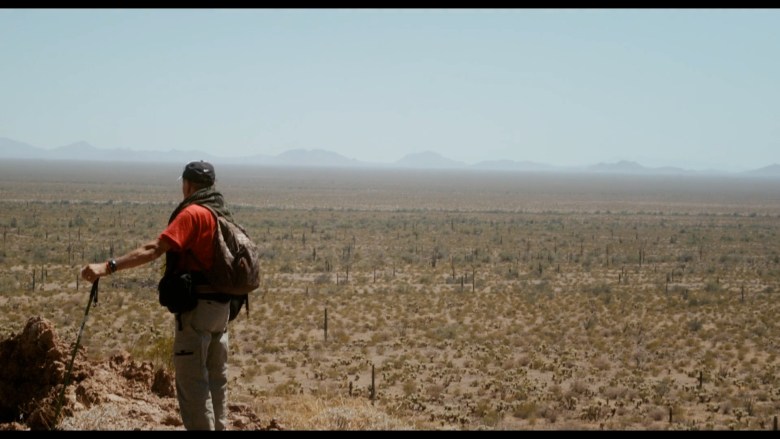 Rafael Larraenza looks out at empty desert. (Photo courtesy “Desert Angel”)
Rafael Larraenza looks out at empty desert. (Photo courtesy “Desert Angel”)
These slow shots of empty desert are interspersed between shaky, hand-held shots as the film crew follows Larraenza, even into risky situations.
Los Angeles-based director DeLuca, shared that in Texas in 120-degree weather, the soles of his shoes melted off and the crew had to use gaff tape to fix his footwear so he could hike out of the desert.
Despite the practical difficulties the crew faced following Larraenza at all times, their vérité filming style meant none of that was shown.
DeLuca, who grew up in Vista and Oceanside, has a personal connection to Larraenza that made him decide to make a documentary after meeting him. In high school, his best friend’s father was deported, then went missing while trying to walk back. Larraenza was part of search efforts.
Even though DeLuca’s friend’s father died, the fear and uncertainty the community went through while waiting cemented his interest in creating a film about Larraenza, one of the few people who was willing to help during that period.
In the interview after the film, Larraenza shared that increasingly he has been on search missions for people who were deported after years in the United States, desperate to be reunited with family.
More information about Desert Angels and Rafael Larraenza’s work can be found here.
READ NEXT

